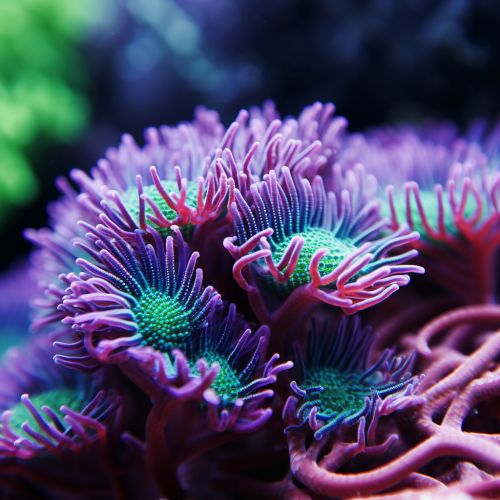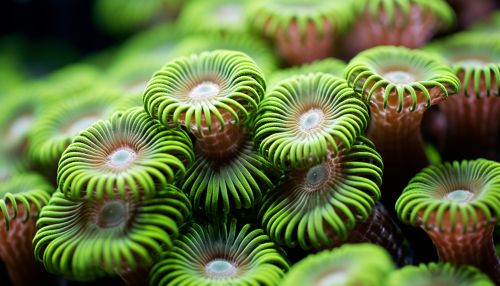The Role of Coral Algal Symbiosis in Reef Health
Introduction
Coral algal symbiosis is a mutualistic relationship between coral and photosynthetic algae, specifically dinoflagellates of the genus Symbiodinium. This symbiotic relationship is fundamental to the health and survival of coral reefs, which are among the most diverse and productive ecosystems on Earth.
Coral Algal Symbiosis


The symbiotic relationship between corals and algae is a classic example of mutualism, where both organisms benefit from the association. The algae reside within the coral's tissues and provide the coral with organic compounds produced through photosynthesis. These compounds, primarily sugars, lipids, and amino acids, provide the coral with the majority of its energy needs. In return, the coral provides the algae with a protected environment and access to light for photosynthesis, as well as inorganic nutrients such as carbon dioxide, nitrogen, and phosphorus.
Importance of Coral Algal Symbiosis
The symbiotic relationship between corals and algae is critical for the health and survival of coral reefs. The energy provided by the algae allows corals to build the large calcium carbonate structures that form the basis of the reef ecosystem. These structures provide habitat for a wide variety of marine organisms, contributing to the high biodiversity of coral reefs.
In addition to providing energy, the algae also contribute to the coral's ability to withstand and recover from stress. For example, the algae can help the coral resist disease, tolerate high temperatures, and recover from physical damage.
Threats to Coral Algal Symbiosis
Despite the benefits of the symbiotic relationship, it is also a point of vulnerability for coral reefs. Stressors such as high temperatures, pollution, and disease can disrupt the symbiosis, leading to a condition known as coral bleaching. During a bleaching event, the coral expels its algal symbionts, causing it to lose its color and potentially leading to the death of the coral if the stressor persists and the symbiosis is not reestablished.
Coral Bleaching
Coral bleaching is a significant threat to coral reefs worldwide. It is primarily caused by elevated sea temperatures, which can disrupt the photosynthetic process in the algae and lead to the production of harmful reactive oxygen species. These reactive oxygen species can damage the coral's tissues, leading to the expulsion of the algae.
Coral Algal Symbiosis and Climate Change
Climate change poses a significant threat to coral algal symbiosis and the health of coral reefs. Rising sea temperatures, ocean acidification, and increased frequency and intensity of storms can all disrupt the symbiotic relationship and lead to coral bleaching. In addition, climate change can alter the distribution and abundance of Symbiodinium, potentially affecting the resilience of coral reefs to stress.
Conclusion
Coral algal symbiosis is a critical factor in the health and survival of coral reefs. Understanding this symbiotic relationship and the threats it faces is essential for the conservation and management of coral reefs. Continued research and monitoring are needed to assess the impacts of climate change and other stressors on coral algal symbiosis and to develop strategies for protecting and restoring coral reefs.
